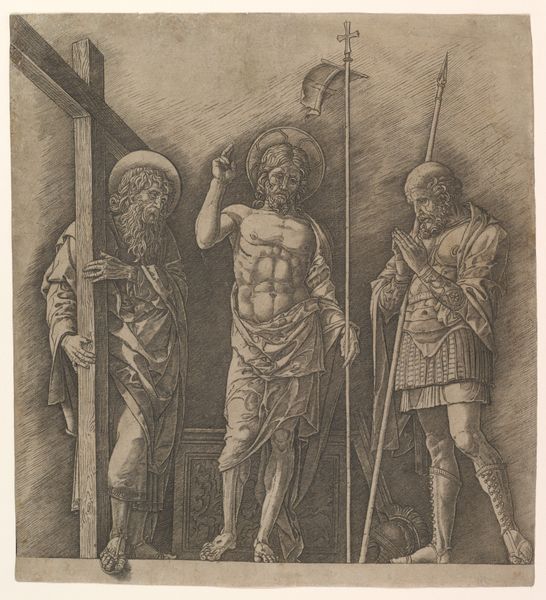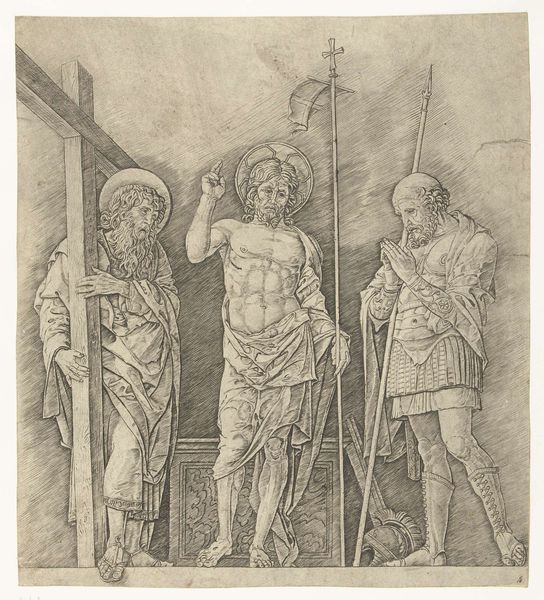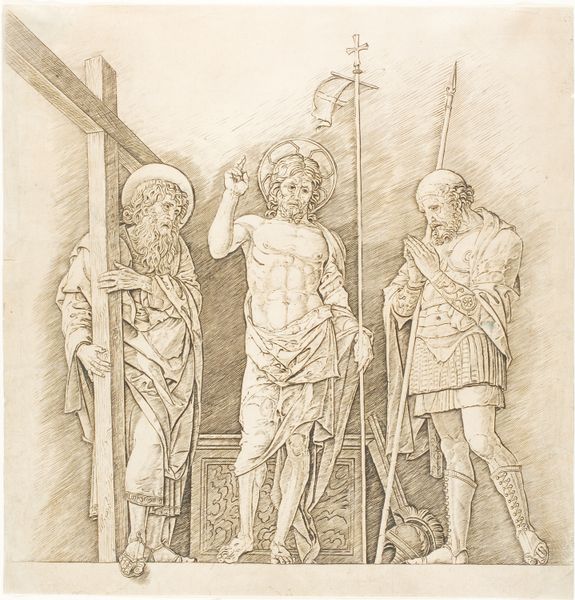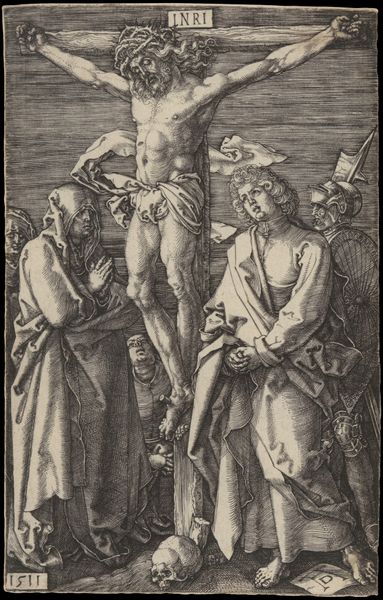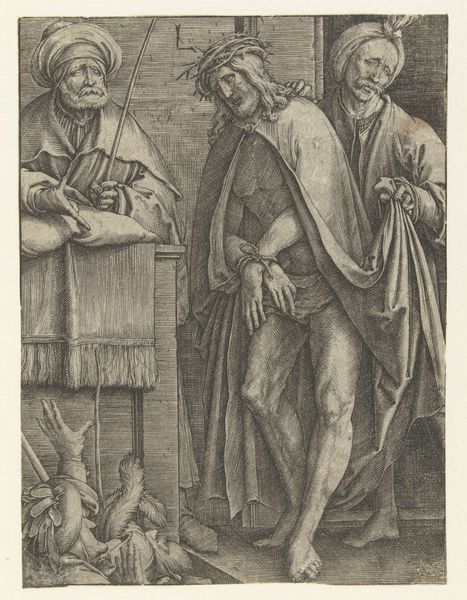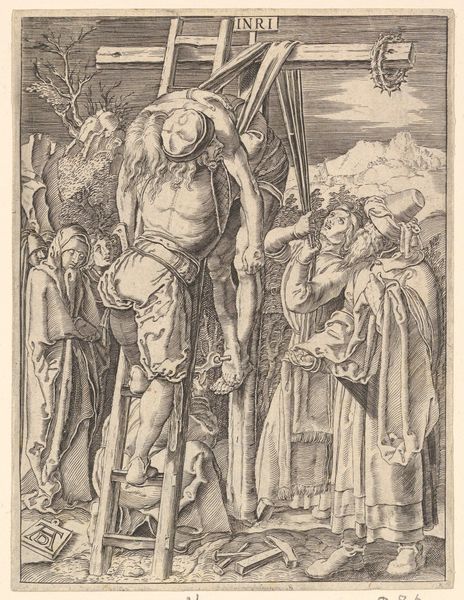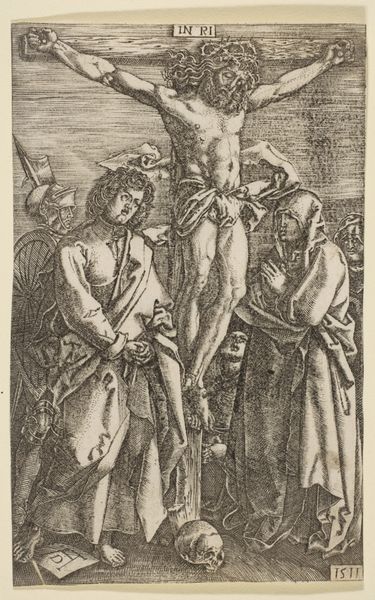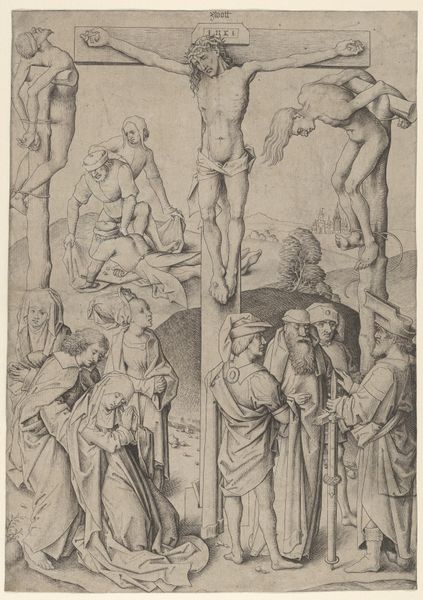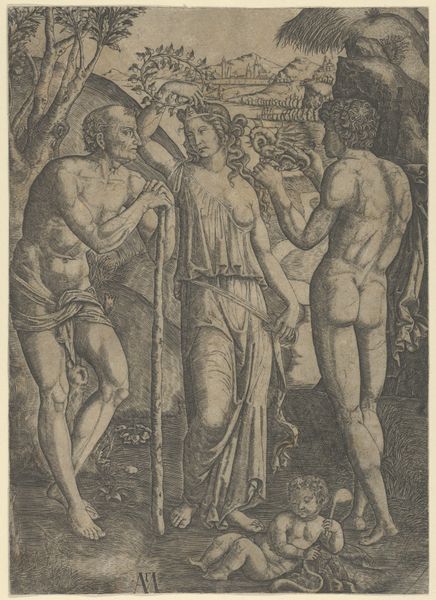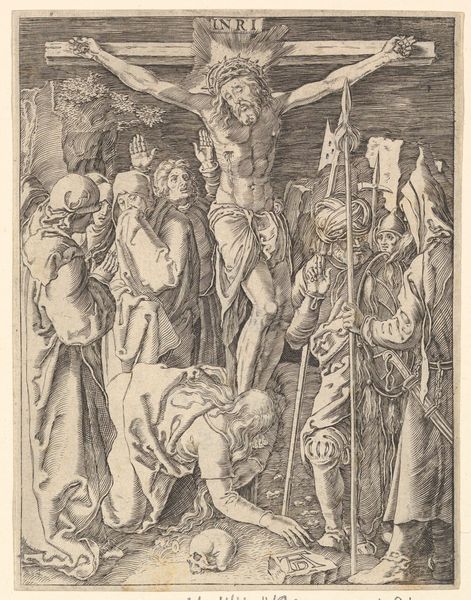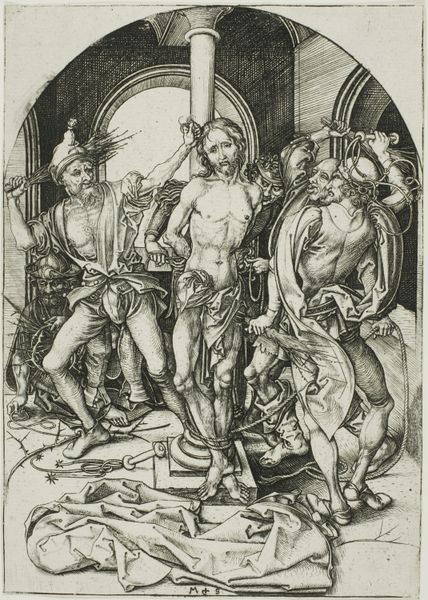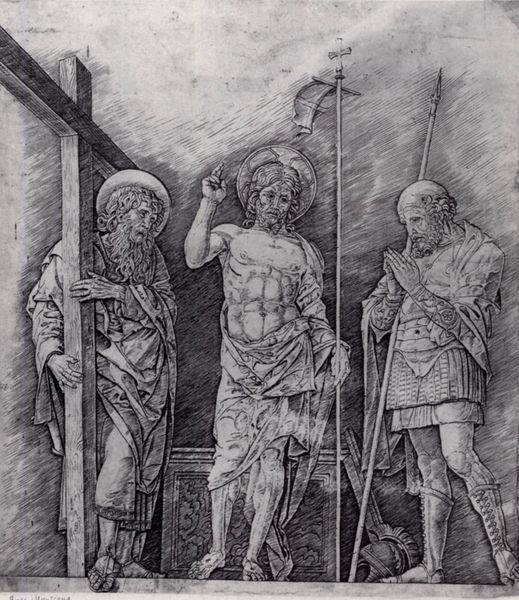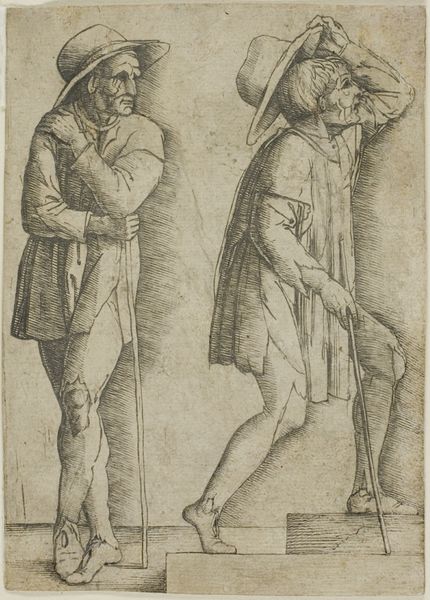
Risen Christ Between Saints Andrew and Longinus c. 1472
0:00
0:00
Dimensions: 320 × 292 mm (plate); 323 × 297 mm (sheet)
Copyright: Public Domain
Curator: Here we have Andrea Mantegna’s “Risen Christ Between Saints Andrew and Longinus,” a print from around 1472, residing here at the Art Institute of Chicago. Editor: It's striking, isn't it? Stark, with those severe lines and solemn figures. It gives the impression of a half-erased memory, something seen through a very fine veil. Curator: What’s remarkable is Mantegna's dedication to line and the medium of engraving itself. Consider the labor involved in creating this matrix – the incising of lines into the metal plate, the wiping of ink, and the pressure required for each print. Each element bears witness to both mechanical reproduction and individual artistry. Editor: I am mostly drawn to the somber quality given by Mantegna. His Christ here doesn't possess the triumphant gleam found in many portrayals; instead, He appears weary, perhaps even melancholic. I'd like to hear some of those production notes! The creative intention gets revealed within the technique itself, isn't it? Curator: Indeed! The influence of classical antiquity permeates his process as well. Notice how he mimics ancient reliefs in his compositions? Moreover, printmaking allowed wider access to images, democratizing art in its own way. That labor directly contributed to the dispersal of artistic ideas and new styles during the Renaissance. Editor: It gives you chills when you consider that, how labor became so central during this revolutionary movement. Looking at the textures and how the composition carries you between the subjects... Is Longinus experiencing an emotion that might relate to shock, to seeing such event occur? Or do you consider he is overwhelmed because he just understands what's in front of him? Curator: That’s precisely the intersection where form meets function and belief confronts political positioning, right? These pieces served more than just a function, even after its wide availability due to Mantegna’s clever manufacturing methods. Editor: You're so correct. Seeing this allows us a strange sense of being witnesses of those ancient yet current clashes, thanks to Mantegna’s creative process, which he so cunningly replicated on printed materials!
Comments
No comments
Be the first to comment and join the conversation on the ultimate creative platform.
